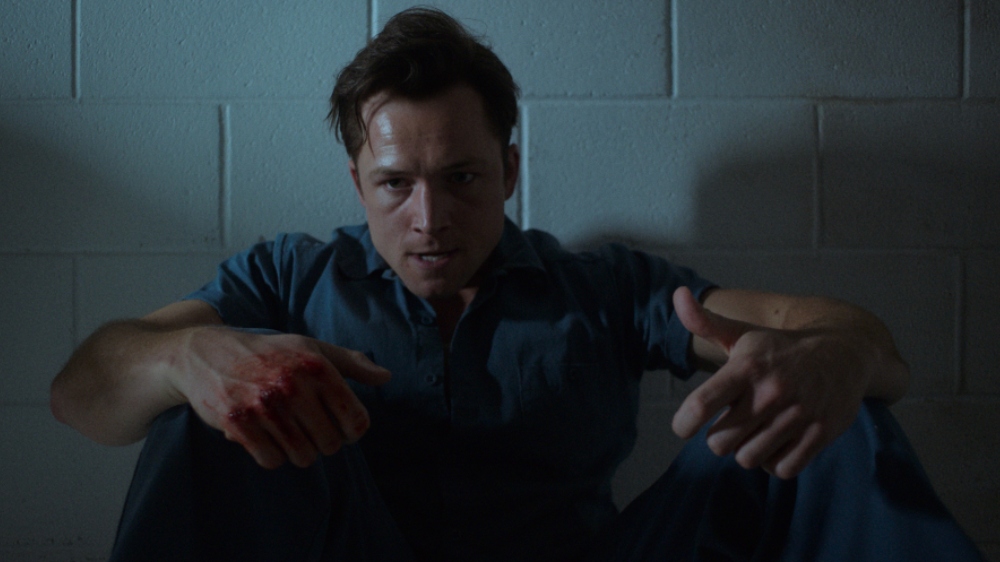
Based on actual events, the Apple TV+ series Black Bird is a cut above standard true-crime fare, elevated by showrunner Dennis Lehane and exceptional performances from Taron Egerton and Paul Walter Hauser.
Egerton stars as Jimmy Keene, a small-time hood who is facing a 10-year prison stretch when the feds (Greg Kinnear and Sepideh Moafi) offer him a deal — if he agrees to enter a maximum-security prison, befriend a serial killer named Larry Hall (Hauser), and find out where Larry buried his victims, he’ll be a free man. Of course, this undercover mission forces Jimmy to confront several unpleasant truths about himself.
Part of the limited series’ success is due to Lehane, the crime novelist behind Mystic River and Shutter Island, who does a great job maintaining the momentum over six episodes, and also makes strong use of Ray Liotta in one of the actor’s final roles. Black Bird also has a wholly distinctive look and tone, the result of a creative collaboration between Lehane, three directors (Michaël R. Roskam, Jim McKay, and Joe Chappelle), and the show’s Director of Photography, Natalie Kingston, who shot all six episodes, which is rare in the world of television.
Below the Line recently hopped on Google Meet to chat with Kingston, who makes her first foray into television with Black Bird after shooting a handful of indie features, documentaries, and music videos.
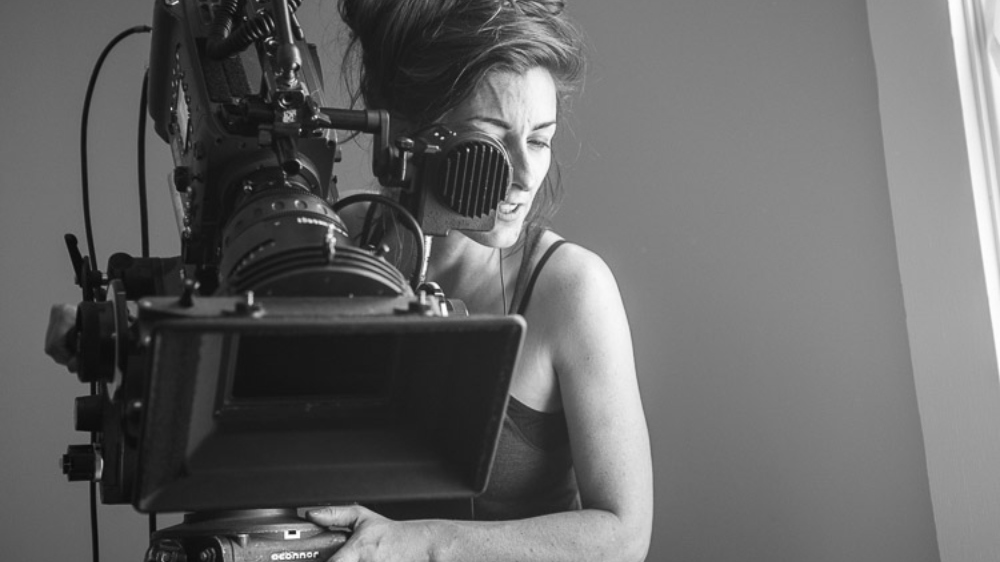
Below the Line: How and when did you first get involved with Black Bird?
Natalie Kingston: My agent sent me the scripts, and I was immediately hooked. I had an interview a couple of days later, and they told me I got the job. I think it was the week after that I was on a plane to New Orleans to prep and shoot.
It’s a very location-heavy series, so most of my time was [spent] scouting locations and then prioritizing the first chunk of shooting. There was no way to prep for a six-part series in five weeks, but we had a week off at the halfway mark when Jim McKay came in, and another week before Joe Chappelle started the last two episodes.
BTL: When you’re working with different directors, who is actually in charge? Whose vision is this, ultimately?
Kingston: This is Dennis’ baby. He adapted the book and is the showrunner. He’s not a micromanager, he really lets all the creatives do their thing. Of course, he has strong opinions, and there are certain things he wants to get across. We were all on board with what he wanted to do. I had a lot of creative freedom, and he was very receptive to my ideas.
BTL: Why do you think you were hired?
Kingston: That’s a good question. I think he wanted someone who would be very collaborative. He’s said several times that he looks for people without egos who would be fully committed.
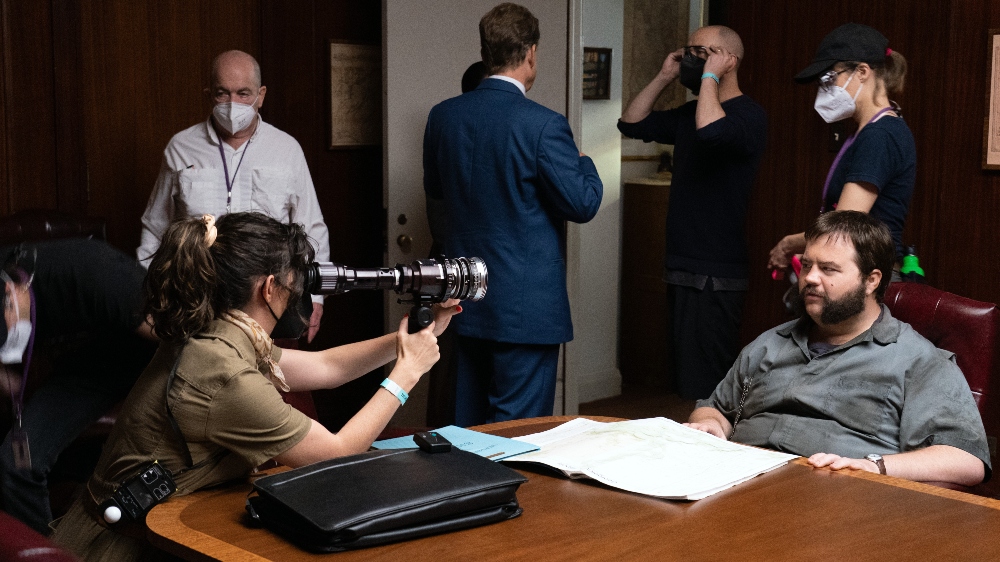
BTL: I think you got the job because you’re so clearly empathetic to the story and characters. What’s interesting about the series is that despite the horrible situation it depicts, viewers always understand why the characters behave the way they do.
Kingston: That’s what I loved about Dennis’s perspective. You do have empathy for Larry Hall at times. You don’t condone the crimes he committed, you know he is a monster, but he is still a human.
Dennis wanted to explore all these different levels of misogyny [and] toxic masculinity, and where each man finds himself on that spectrum. What I found compelling was how you could draw empathy for a serial killer and still feel so conflicted about him. You see what he went through in his childhood, and while you don’t condone raping and killing his victims, you understand him. Then you see that reflecting back on Jimmy Keene, how he starts to peel back the layers of his own misogyny.
BTL: The series doesn’t pretend that Jimmy is any better than Larry, with whom he shares similarly dark impulses and urges. If things were different, and he didn’t have a caring father figure in his life, he might have turned out the same way…
Kingston: I love it when I get to tell these kinds of character-driven stories. This isn’t just plot-driven, there are powerful layers underneath, and that’s what’s really driving the series.
BTL: How did Lehane explain his ideas for the look of the show?
Kingston: He had me watch Silence of the Lambs, not necessarily for its look, but for its tone. And he mentioned Days of Heaven for the Brian Miller (a police detective played by Kinnear) world and the Jessica Roach (one of Hall’s victims, played by Laney Stiebing) world.
I’m a Gordon Parks fan, and I look at his photography a lot for inspiration. His 1957 book The Atmosphere of Crime — color photographs he took over a six-week period — really inspired me for this series. The palette of his prison world [and] his expressive use of natural light are what I tried to draw on. We painted our prison light pink, light green, light blue, [the] same [as his] color palette. And I tried to infuse shadow and contrast the same way, where they don’t feel contrived [or] on the nose but are still unsettling and real.
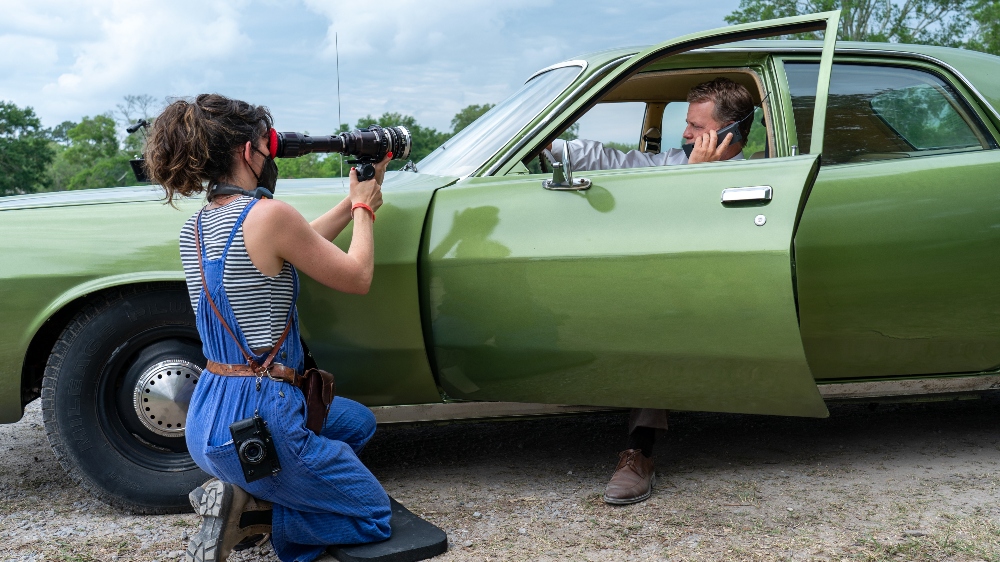
BTL: You say you watched Silence of the Lambs for its tone. How do you create tone from a visual perspective?
Kingston: For Black Bird, one big thing was keeping the camera almost uncomfortably immersed inside Jimmy’s and Larry’s very tense, scary conversations. We achieved that by shooting in large format, which also helped with our small prison sets. Shooting with large format, with a wider field of view, created this sense that faces became landscapes. You could really sink into their perspectives and headspaces. Especially with Larry, it created a very uncomfortable feeling of not being able to escape him, at times.
We kept camera movement very understated, not really noticeable, sort of subconscious. Sometimes we used very slow push-ins, starting in an objective point of view and ending in a character’s subjective perspective. Sometimes, it was simply remaining static.
With lighting, I wanted the jail to very subtly get darker and darker as the series progresses and Jimmy examines his own demons.
BTL: How do you calculate where to be on lines of dialogue?
Kingston: It’s all driven by perspective. It’s all about determining whose perspective we are in within each scene. A good example would be the scene between Larry and Jimmy in the wood shop in Episode 5. I think it was a 10-page scene. We start on an objective two-shot and then there is a long push-in until we end in a close-up two feet away from Larry as he’s ending his monologue. This brings you uncomfortably close in on Larry’s headspace as he’s describing the details of Jessica Roach’s death. You are forced to take it all in, just as Jimmy does.
BTL: You’re using two cameras, so that must make it easier on the actors, right?
Kingston: We never cross-shot. We would get all of Paul’s stuff and then all of Taron’s.
BTL: Do you usually operate yourself?
Kingston: I usually do operate, but since this was my first TV series, I talked to my cinematographer friends and mentors, and they all recommended that I don’t operate. In TV, with multiple cameras, there is so much to orchestrate. It’s better to step back. I’m glad I made that decision. It was hard to figure out, at first, things like, ‘where do I stand during a take?’ My two operators — Colin MacDonnell and Matt Bell — were wonderful. I’ve collaborated with them before, so we were all comfortable working together. They both had great ideas and helped enhance the visual language.
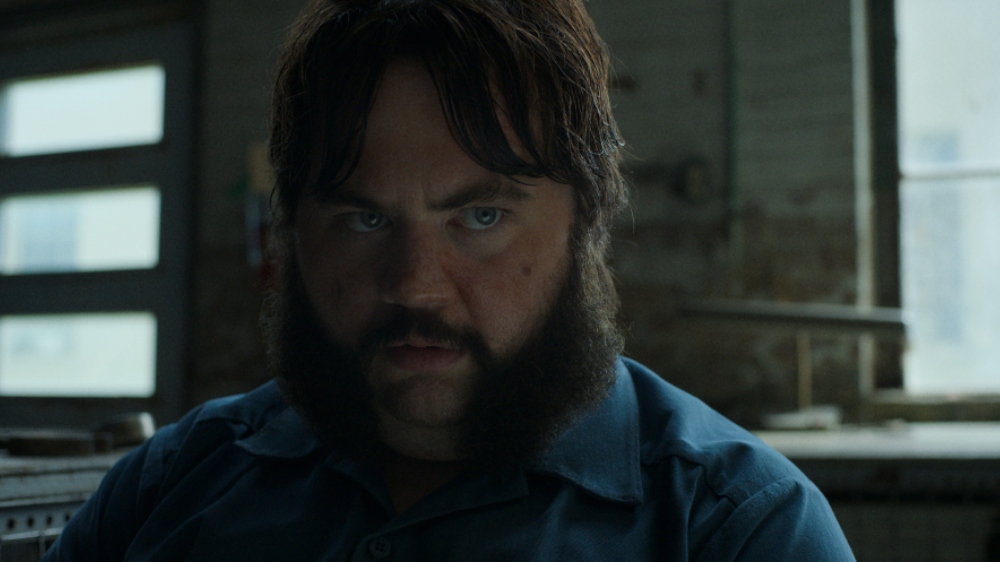
BTL: What about your camera and lighting package?
Kingston: I shot on the Alexa Mini LF, with Panavision H series lenses. For lighting the daytime scenes, I used HMIs for the main lights. We had a good bit of LED lighting, SkyPanels, and Astera Tubes. I worked a lot with practical lighting, [and] some tungsten lighting as well.
BTL: This was for Apple, so could you get anything you wanted in terms of equipment?
Kingston: [laughing] Apple budgets are nice. We used a Technocrane quite a bit — in the prison, some of Jessica’s flashbacks, [and] when Brian Miller goes into the cornfield. Apple really supported what we were trying to do creatively.
BTL: How much of this was shot on soundstages?
Kingston: We shot most of the series [in] practical locations. The main prison was a real location, a prison in New Orleans that hasn’t operated since Katrina. We had full access but it was quite challenging to shoot in real cells and deal with all those small spaces.
We built the mess hall, the psychiatrist’s offices, [and] the grave with the casket, [plus] a couple of small sets like Larry’s bedroom, [and] the airplane at the end.
BTL: Speaking of the cemetery scene, I’m curious how much of it was in the script. Were the cutaways and inserts written? Did you suggest any shots?
Kingston: It [was] a combination of Dennis’ writing and Jim McKay and I suggesting shots. The flashbacks were pretty specific, but we would also be inspired seeing things on location.
Jim was very specific about the opening shots in the cemetery, like how we would get to little Larry and his dad. So that was all shot-listed out.
In the other flashbacks, there was some free-form shooting, like with Jimmy’s mother and Jessica Roach’s scenes.
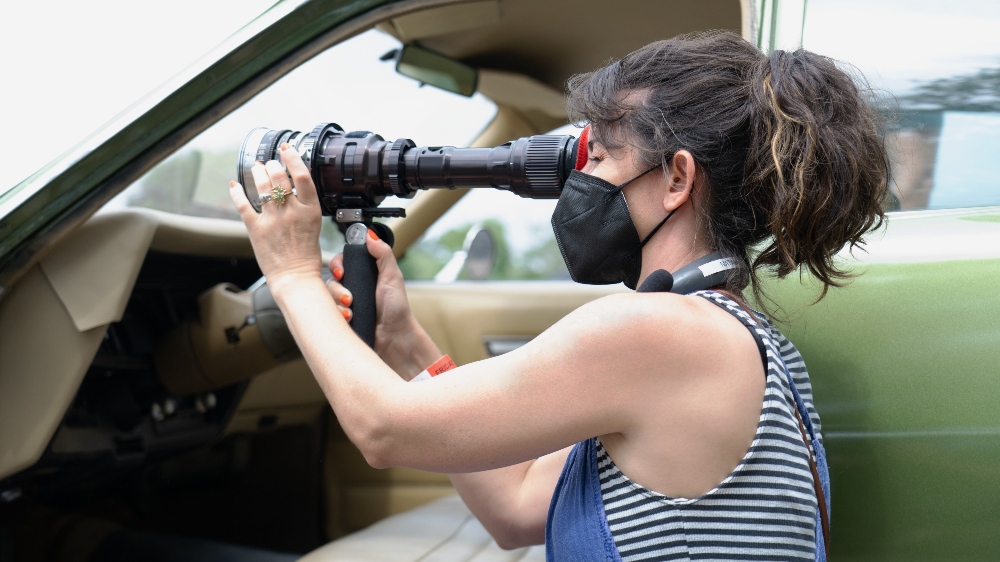
BTL: I went into this thinking it was going to be another true-crime story, but it ended up being a really unsettling exploration of psychological trauma.
Kingston: Exactly. You think it’s going to be a run-of-the-mill crime drama that you’ve seen before, [but] you don’t expect to end up being vulnerable and examining your own life.
BTL: I can’t let you go without asking about Ray Liotta, who plays Jimmy Keene’s father. What was it like working with him?
Kingston: I consider myself lucky to have worked with him. We were all blown away by his scene with Jimmy in prison when they talk to each other through the glass wall. A lot of metaphors there. The glass symbolizes a complex relationship where they can’t fully get through to one another. Seeing Big Jim the first time, he’s so small inside the window, far away from his son’s perspective. There’s the idea of Jimmy yearning for a relationship he never had.
So it was an intentional choice never to shoot clean on their closeups, [and] always shoot them through the glass. And in the moment, I saw Taron’s reflection in the glass window, looking through to Ray, and thought that visual metaphor was so powerful. So we had Taron shift his position to make it more prominent.
I always try to remain fully present on set to notice these small details [and] happy accidents. They can really enhance a scene emotionally.
Black Bird is now streaming in its entirety on Apple TV+.





